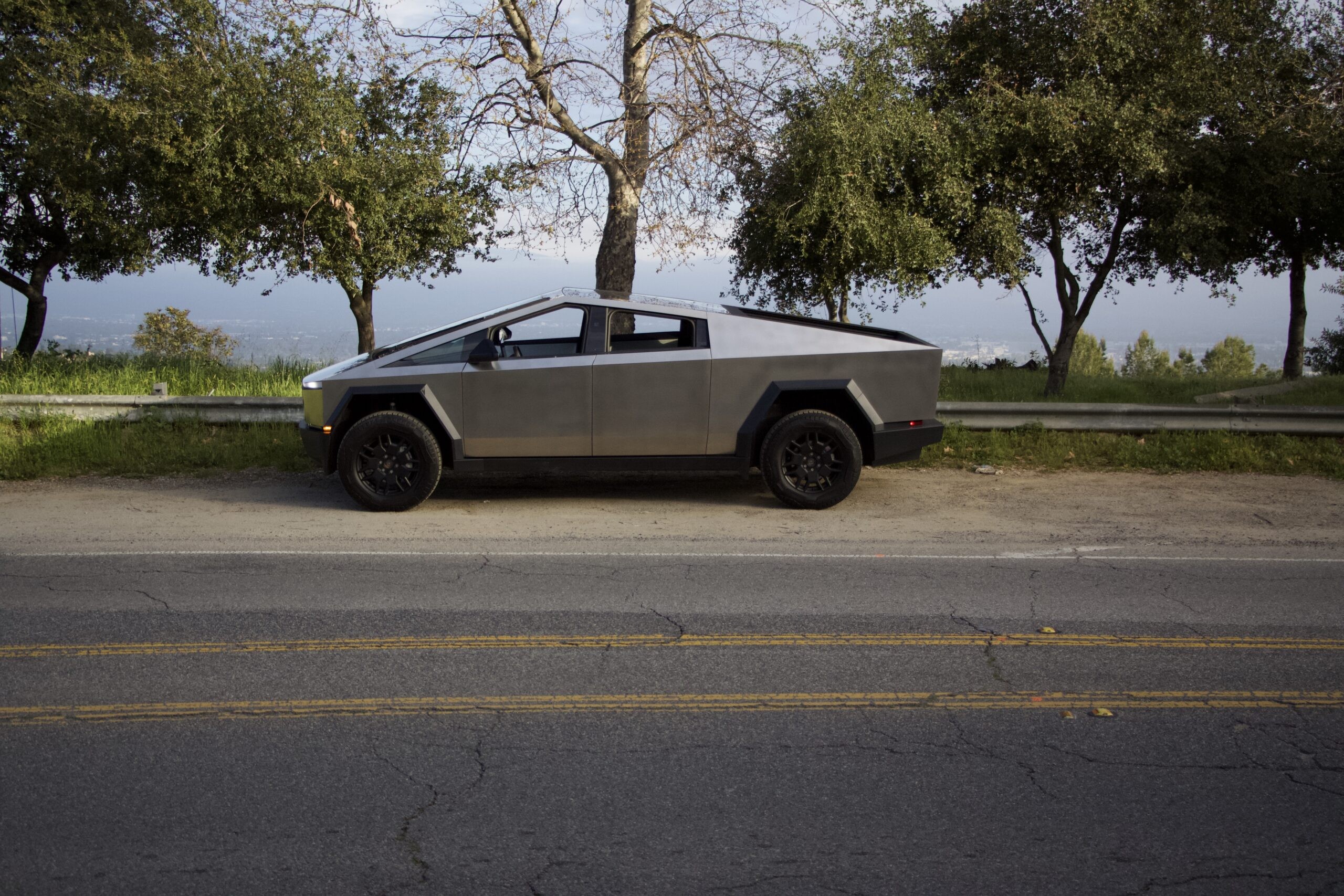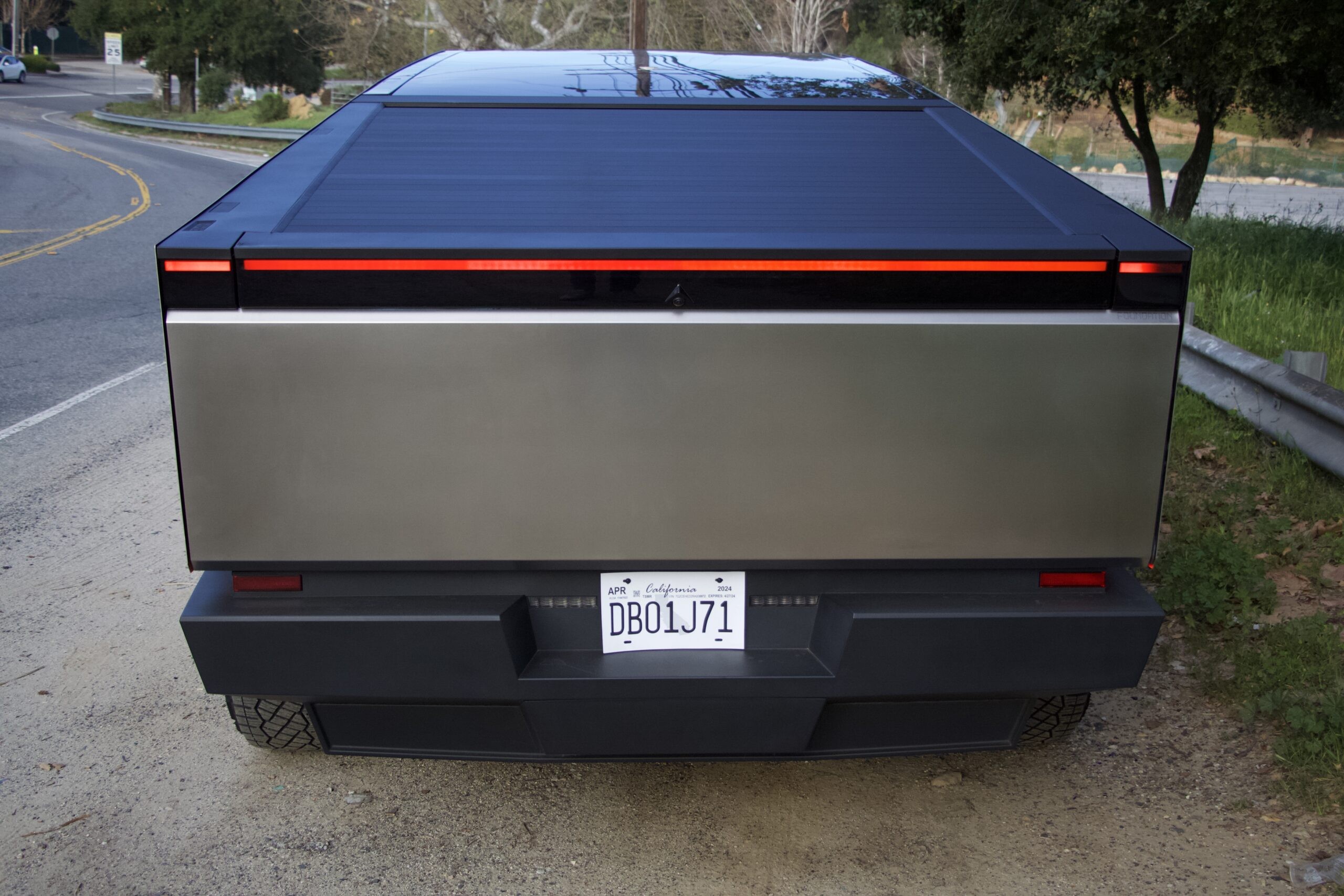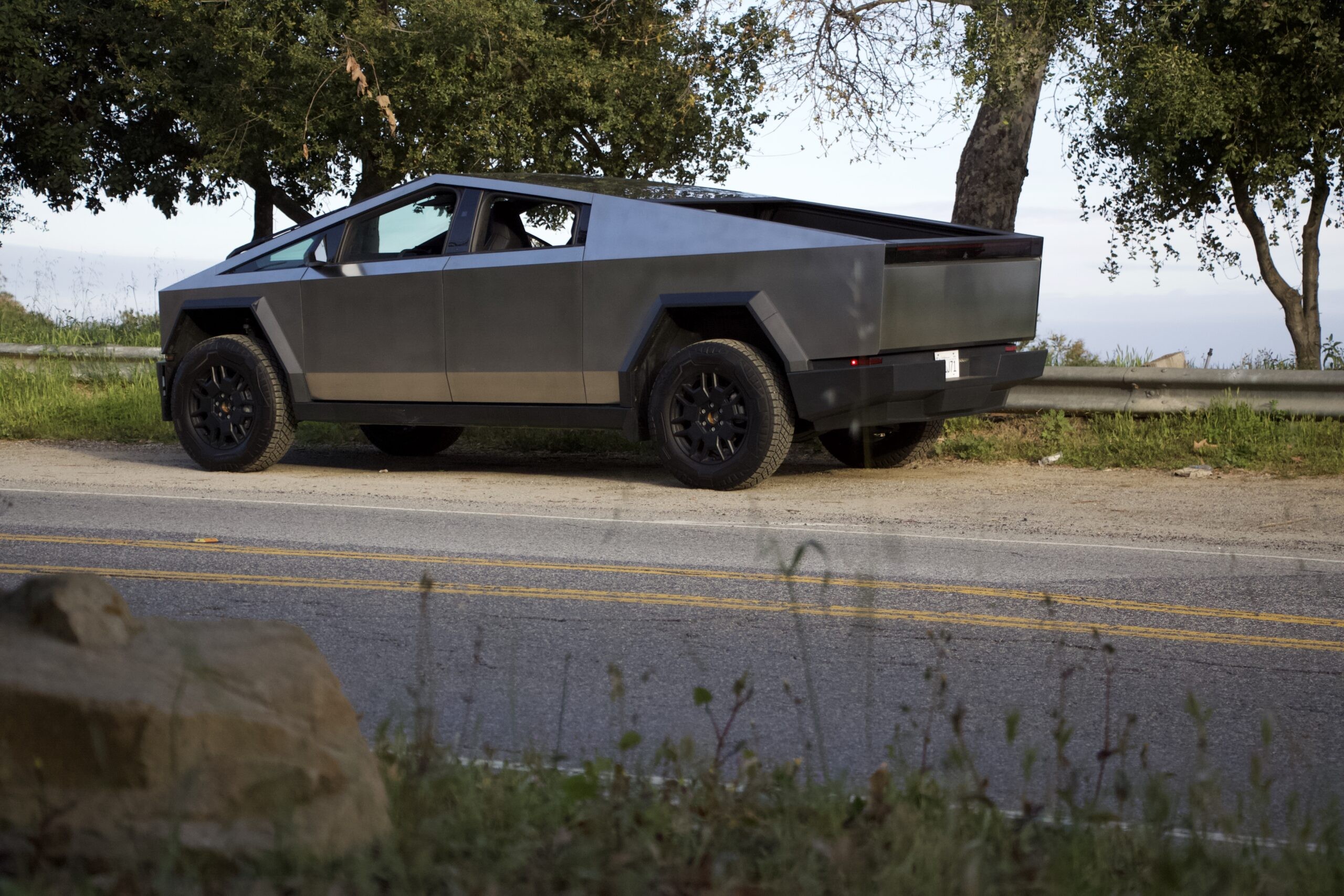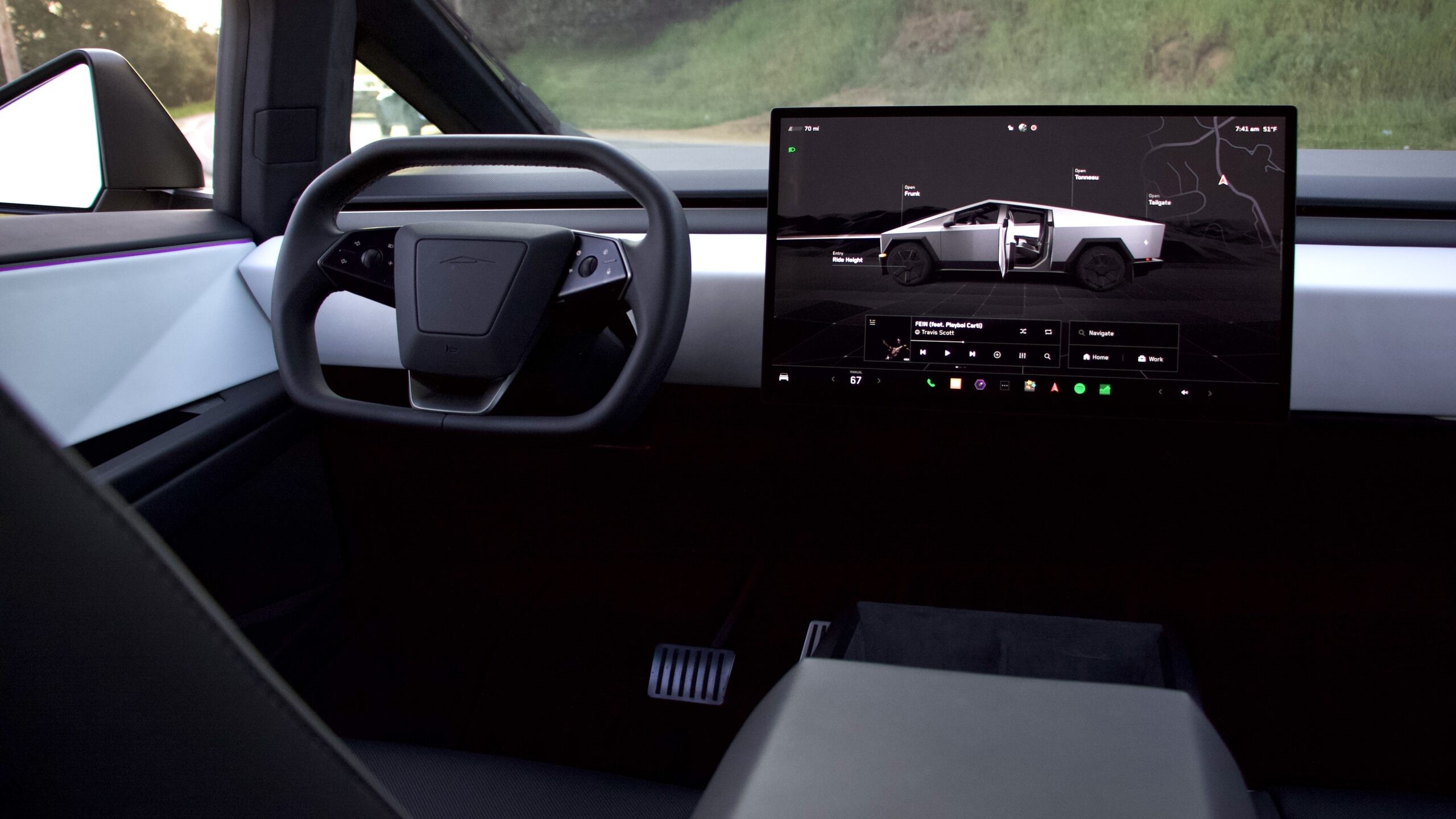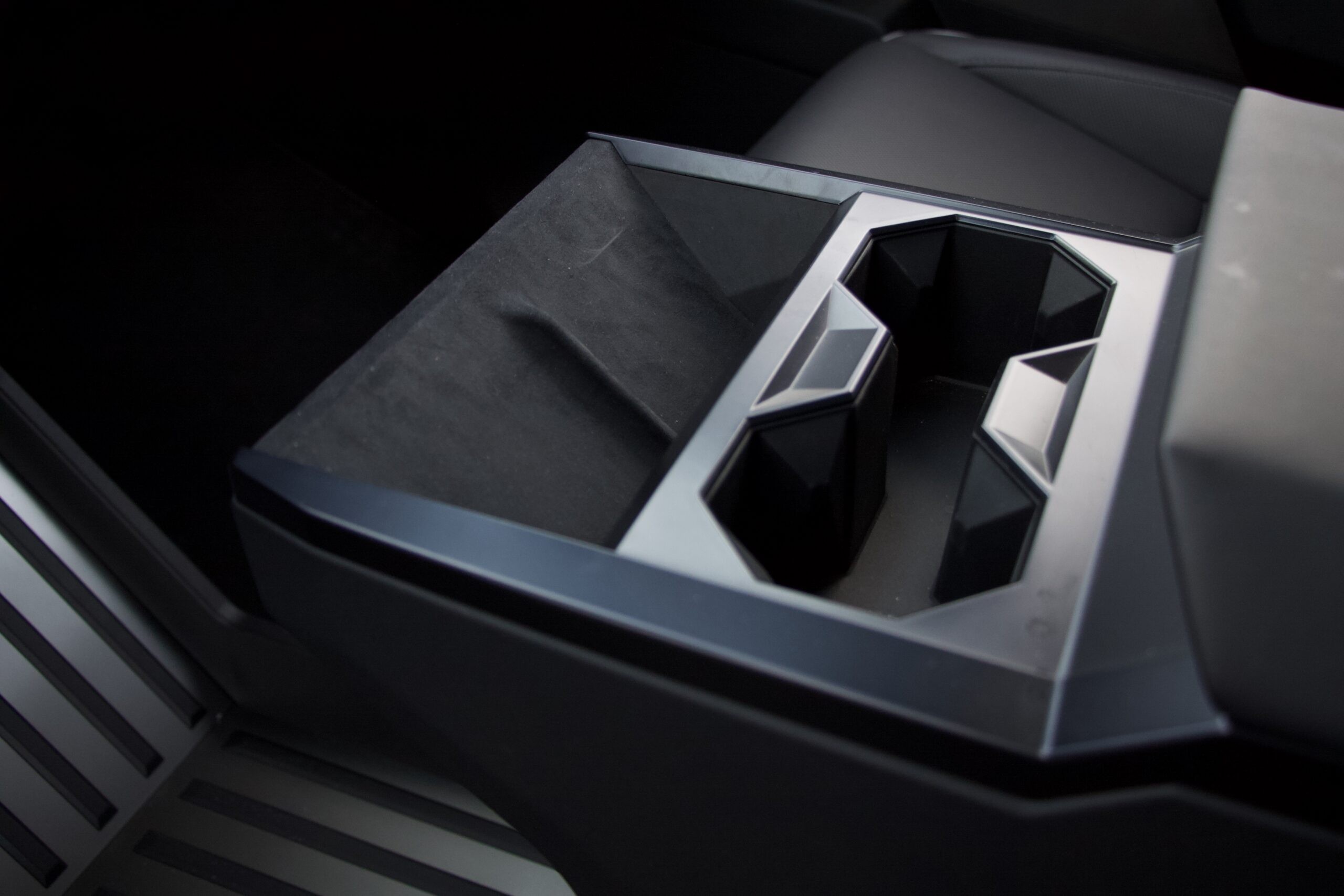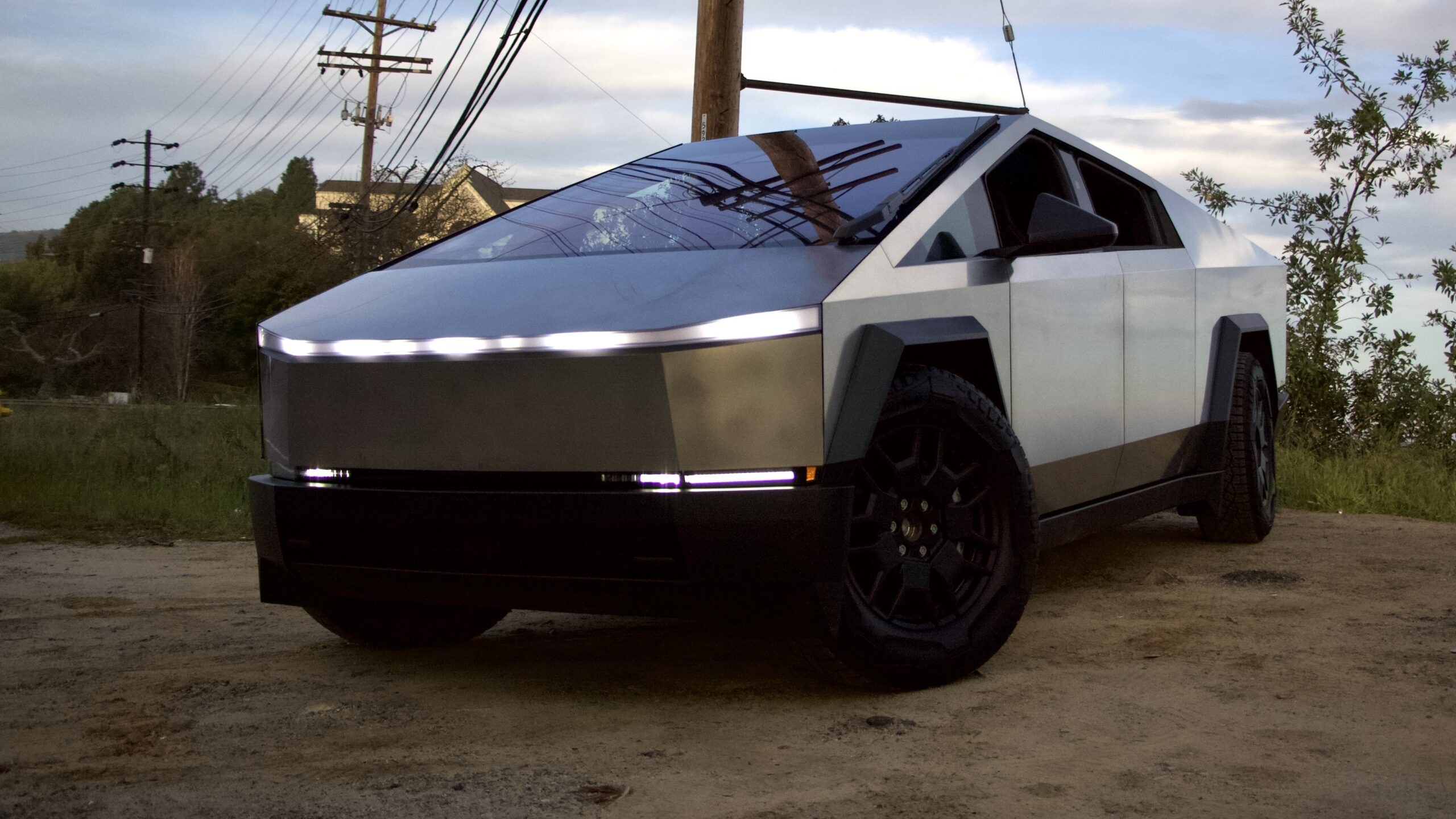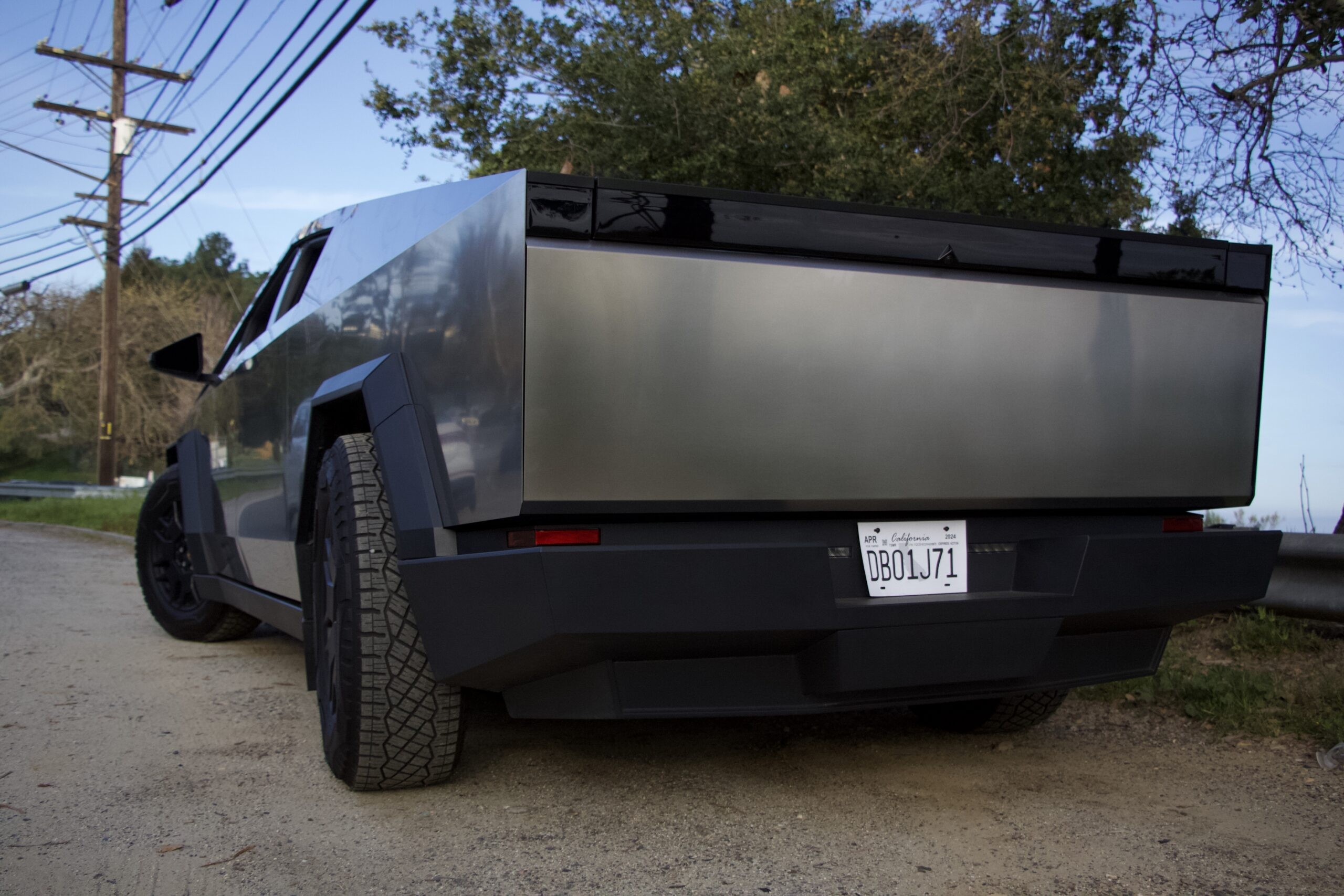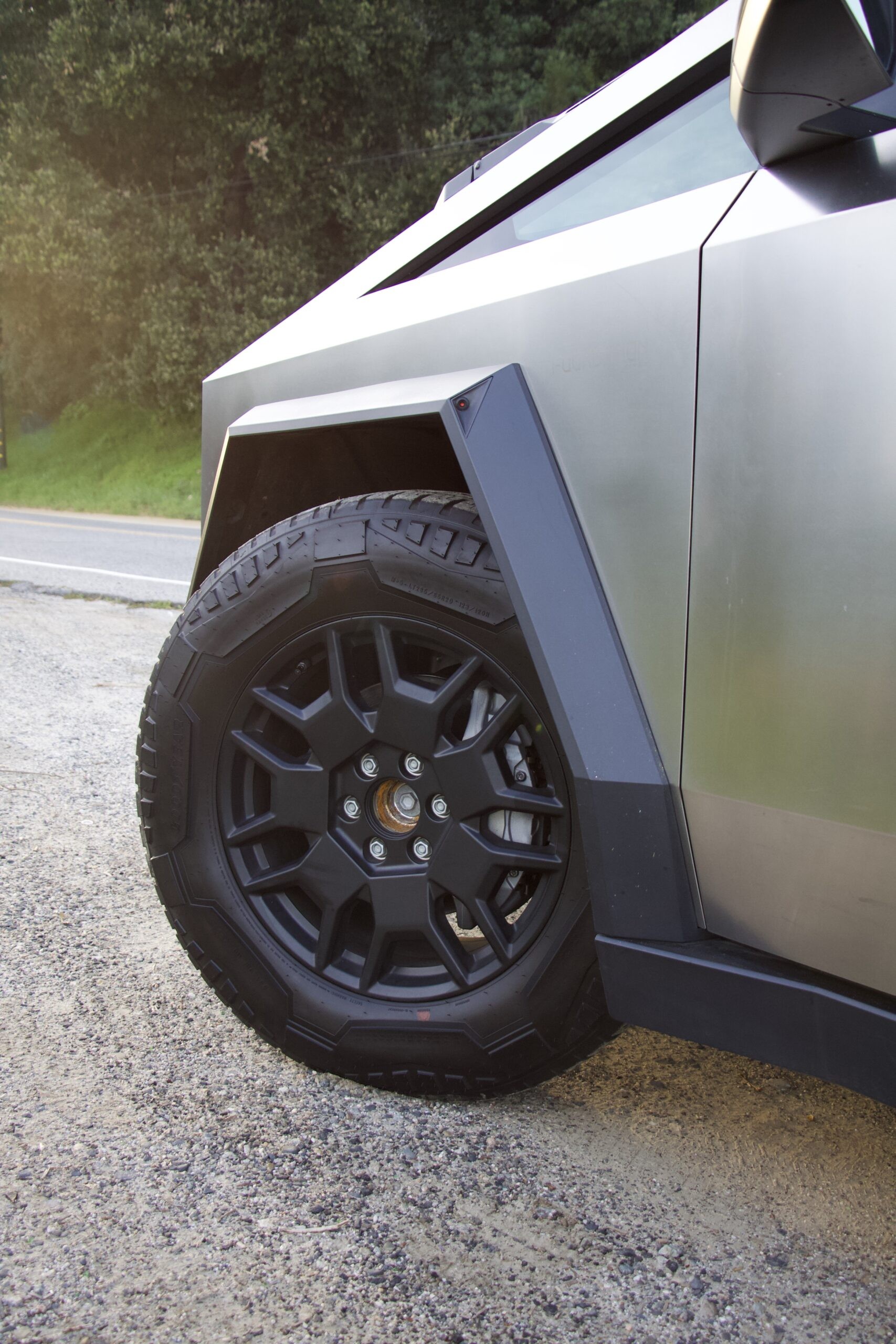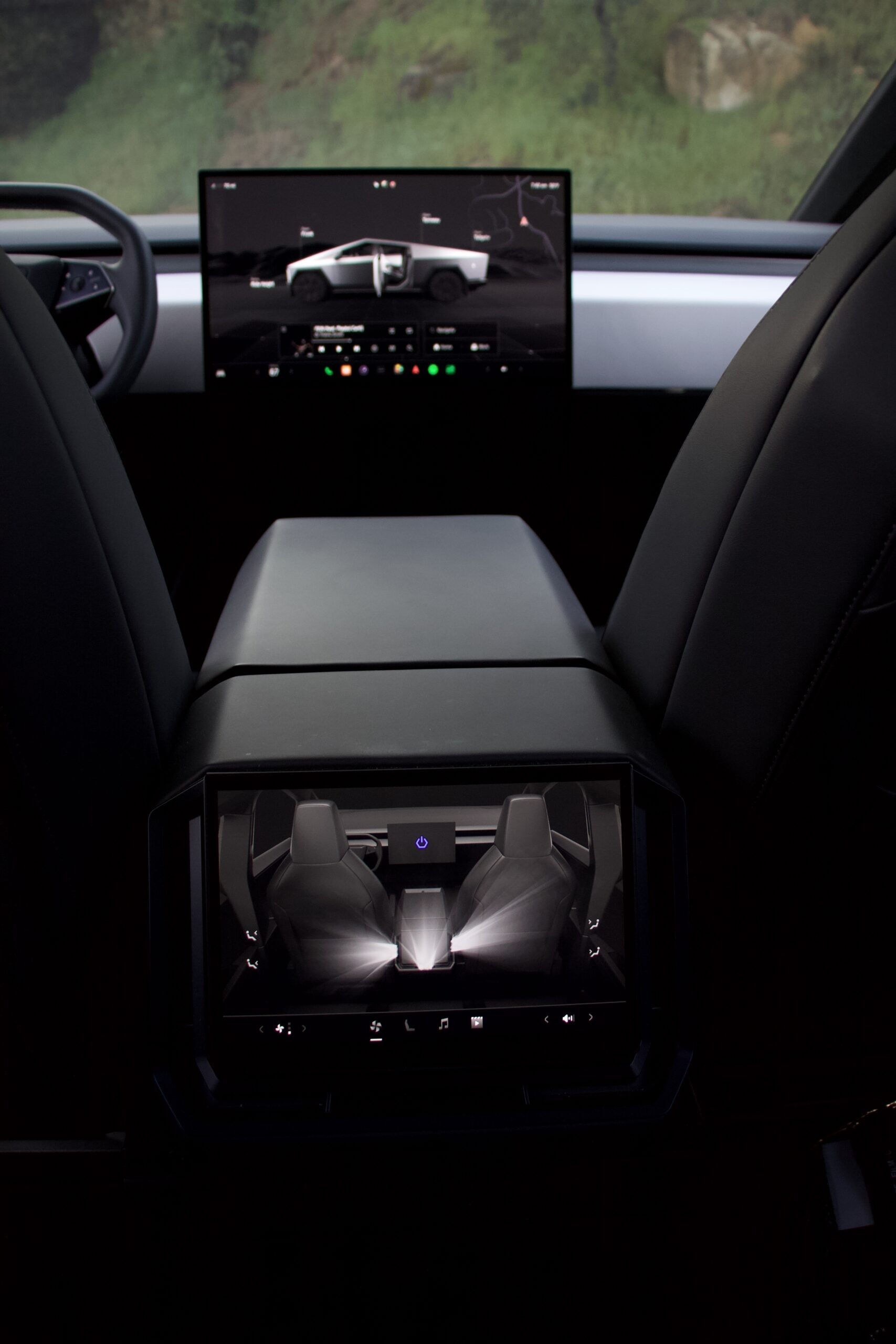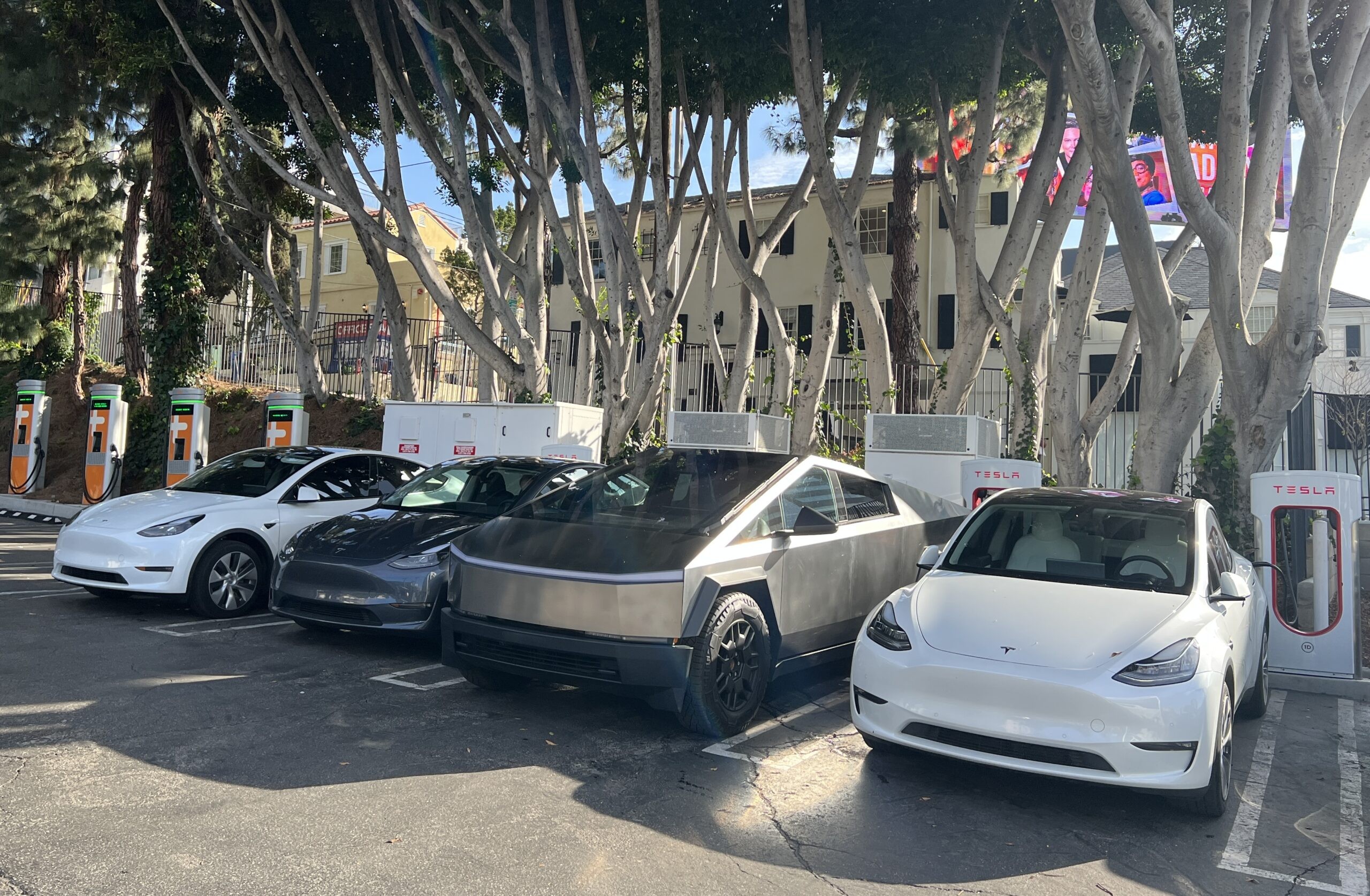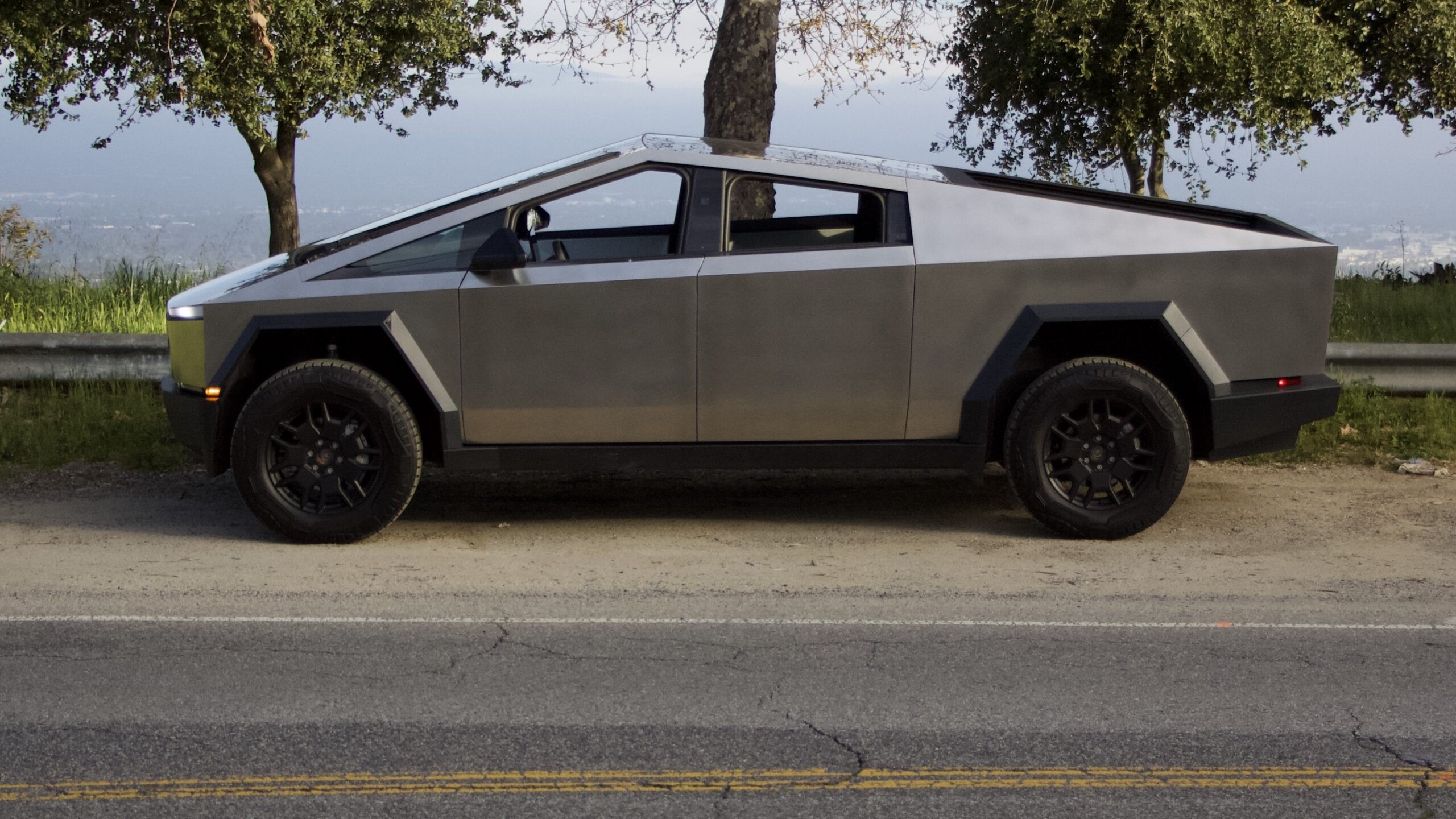The Tesla Cybertruck has undeniably captured global attention, becoming a cultural phenomenon since its dramatic unveiling in 2019. Elon Musk’s stainless steel creation, born from a polarized climate and unconventional development, has finally materialized as a purchasable vehicle, complete with features like Bioweapon Defense Mode. Whether you’re already decided or still curious, driving the Cybertruck is an experience that sparks strong opinions. This review dives into the reality of the Cybertruck, separating hype from substance, and exploring whether this groundbreaking truck lives up to its revolutionary promise.
Tesla, known for its unconventional approach, doesn’t offer typical press vehicles. Therefore, we turned to Turo, a car-sharing marketplace, for a 24-hour, 100-mile experience with a privately owned Cybertruck. This extended test drive provided valuable insights, albeit without the opportunity for rigorous off-road testing or evaluating its maximum towing capacity. We extend our gratitude to Turo for facilitating this rental and to Chris, the enthusiastic Cybertruck owner who lent us his vehicle in Los Angeles.
Cybertruck: The Basics Unveiled
Echoing the DeLorean DMC-12, the Cybertruck distinguishes itself with a stainless steel body. Strikingly devoid of Tesla branding, its wedge-shaped silhouette is instantly recognizable. Standard features across all Cybertruck models include four-wheel steering, a substantial 123-kWh usable battery, a six-foot by four-foot bed, and an impressive 16 inches of ground clearance. True to Tesla’s minimalist interior design, an expansive 18.5-inch central touchscreen dominates the front cabin, complemented by a 9.4-inch rear touchscreen, consolidating most vehicle controls.
Currently, Tesla offers two Cybertruck trims: the dual-motor all-wheel-drive base model, priced at $79,990, and the tri-motor Cyberbeast, at $99,990. Tesla’s official website indicates a rear-wheel-drive version slated for 2025, but for now, the focus remains on the AWD models available for purchase. Our test vehicle was a dual-motor Foundation Series, a limited launch edition of 1,000 units. This series includes exclusive trim, badging, all-terrain tires, and a bi-directional home charger, essentially offering early access to Cybertruck ownership at a premium of approximately $20,000. Performance specifications for the dual-motor AWD Cybertruck include a 340-mile range and a 0-60 mph acceleration of 4.1 seconds. The Cyberbeast sacrifices 20 miles of range for a blistering 2.6-second 0-60 mph sprint, famously demonstrated in a Tesla promotional video where it outpaced a Porsche 911 in an eighth-mile drag race while towing another 911.
Driving Dynamics: Experiencing the Steer-by-Wire System
The Cybertruck pioneers a fully steer-by-wire system, eliminating the traditional mechanical linkage between the steering wheel and front wheels. Electric motors govern all four wheels, and the steering employs a remarkably quick variable ratio. This technology marks a significant shift in driving dynamics.
Navigating turns, whether 90 or 180 degrees, becomes intuitive and effortless. Instead of hand-over-hand steering, a mere 75-degree turn of the wheel suffices for most right turns, with a maximum of about 120 degrees for U-turns. This system eliminates shuffle steering and guesswork, enhancing maneuverability and contributing to the Cybertruck’s surprisingly agile feel, especially when combined with its low center of gravity, typical of EVs.
In line with EV expectations, acceleration is brisk, and the Cybertruck maintains composure at higher speeds while providing reasonable comfort on uneven surfaces. The ride quality is more akin to traditional body-on-frame trucks like the Ram or F-150, offering a distinct sense of individual wheel and suspension movement, contrasting with the more car-like ride of the Rivian R1T.
Similar to other Tesla models, the Cybertruck centralizes most functions within the expansive touchscreen. Exceptions include turn signals, volume control, and the singular windshield wiper control, all integrated into the steering wheel, reminiscent of Ferrari’s control layout. The placement of the volume control solely on the steering wheel means passengers must rely on the touchscreen for volume adjustments, a design choice that raises usability concerns.
Gear selection deviates from conventional norms, requiring users to drag a truck icon on the touchscreen to shift between drive and reverse. While seemingly counterintuitive, backup capacitive touch buttons on the roof provide an alternative in case of touchscreen malfunction. However, during parking maneuvers, the touchscreen interface occasionally proved unresponsive, highlighting potential ergonomic challenges. The complexity of these digital controls contrasts sharply with the simplicity and reliability of traditional mechanical shifters.
Despite touchscreen interface quirks, the Cybertruck’s interior offers ample space and thoughtful design elements. Dual wireless charging pads are conveniently located for the driver, though their suede padding raises durability questions, particularly for work or outdoor-oriented use. The absence of a transmission tunnel maximizes front cabin storage, providing a useful space for bags. Rear passenger space is generous, comfortably accommodating adults even with taller front occupants. However, our test vehicle exhibited minor build quality issues, including a creaking driver’s seat and a seat adjustment control panel that detached easily.
Design and Public Perception: A Bold Statement
The Cybertruck’s design is undeniably central to its identity. In an automotive landscape often dominated by aerodynamic efficiency and conventional aesthetics, the Cybertruck’s angular, almost concept-car-like design stands out dramatically. Its form has remained remarkably consistent since its 2019 debut, defying trends and challenging expectations.
Driving the Cybertruck elicits constant public attention. From pointing and gasps to photo-taking, it becomes a rolling spectacle. This attention, while generally positive, requires a certain comfort level with being the center of attention. Interestingly, tradespeople were among the most enthusiastic admirers, a demographic one might expect to be more critical. Owning a Cybertruck necessitates embracing its attention-grabbing nature.
From certain angles, the Cybertruck’s design is arguably appealing, with a clean, unfussy aesthetic that evokes a futuristic, almost childlike vision. However, the front and rear profiles can appear somewhat bulky. The stainless steel exterior, while visually striking, is prone to fingerprints and smudges, requiring frequent cleaning to maintain a pristine appearance. The potential for customization with magnets adds a playful element to its refrigerator-like aesthetic.
The Cybertruck’s unique design compromises visibility. Large sail panels, a small rear window, and substantial front pillars create significant blind spots. The rearview mirror is basic, lacking a camera feed, which is relegated to the central touchscreen. Lane changes are further complicated by the blind-spot camera feed replacing the turn signal indicator on the screen. The thick side slabs, integral to its design, hinder side loading of the truck bed.
Sharp edges are another notable design element. While not causing injury during our test, they raise concerns about pedestrian safety and potential for accidental contact, possibly suggesting a wrap for added safety and personalization. The original wheel covers, initially a signature design feature, were recalled due to tire damage, proving to be literally too sharp for practical use.
Panel gaps, particularly around the tailgate and bed sides, exhibit questionable fit and finish. Our test vehicle also showed damage to the plastic tailgate trim, indicating potential durability concerns in certain areas.
Features, Options, and the Electric Truck Competition
Cybertruck buyers are likely drawn to its distinctiveness, potentially minimizing cross-shopping. However, comparing it to other electric pickups like the GMC Hummer EV, Rivian R1T, and Ford F-150 Lightning provides valuable context.
Despite its imposing appearance, the Cybertruck is surprisingly lighter than some competitors. The dual-motor variant weighs 6,603 pounds, and the Cyberbeast 6,843 pounds. This is significantly lighter than the Hummer EV but heavier than the Ford F-150 Lightning, positioning it in the mid-range for weight in its class. Its 123-kWh battery capacity is smaller than the Hummer EV’s massive 212-kWh pack, but comparable to the extended-range options of the Ford and Rivian.
Dimensionally, the Cybertruck is longer than the Rivian R1T, with a longer bed, but its bed is narrower and less accessible from the sides.
The AWD Cybertruck’s base price aligns with the Rivian R1T Dual-Motor AWD with the Large battery pack. Range and performance are also comparable between these models. However, achieving Cybertruck ownership at the advertised price may be challenging given initial production constraints and demand. The Foundation Series pricing places the Cybertruck in a higher price bracket, similar to the top-tier Rivian R1T Performance with the Max battery pack. While a range extender for the Cybertruck is planned, it will occupy a significant portion of the bed and incur an additional cost.
The Ford F-150 Lightning offers a more value-oriented proposition, with the Lariat trim and extended range battery starting at a lower price point while providing comparable range and features to the Cybertruck AWD. Currently, Ford and Rivian offer a more accessible and potentially value-driven entry into the electric truck market.
Range, Charging, and Real-World Efficiency
The Cybertruck supports DC fast charging up to 255 kW. However, its charging profile is unique, with faster charging rates observed in the lower state-of-charge range (0-20%).
During our Supercharging test from 20% to 80%, the peak charging rate reached around 135 kW. This may have been influenced by the specific Supercharger station or network load. Battery preconditioning was performed, suggesting it wasn’t a limiting factor. A 40-minute charging stop allowed for a coffee break, highlighting typical EV charging durations.
The Foundation Series Cybertruck has an EPA-estimated range of 318 miles. However, real-world range tests have shown deviations from this figure. Our experience indicated a higher rate of range depletion than projected, suggesting that driving style and conditions significantly impact actual range.
Owner’s Point of View: Living with the Cybertruck
Chris, a Cybertruck owner of a couple of months, provided valuable owner insights. While acknowledging his rental business influences his perspective, his overall review was positive.
“I love it, my favorite car so far,” Chris stated, highlighting his enthusiasm. He was an early adopter, ordering on the day of its 2019 announcement and upgrading to the Foundation Series for quicker delivery. His suggestions for improvements focused on interior trim quality, describing the plastic trim as “so cheap,” while praising the technology. He also suggested a slide-out tailgate as a desirable feature.
Chris estimates a real-world range of “around 300 miles” and typically avoids charging to 100%, possibly due to battery preservation or the charging profile. His total investment, including Full Self Driving beta and a bi-directional home charger, was approximately $115,000. Despite minor early quality issues, Chris expressed continued satisfaction with his Cybertruck ownership.
Verdict: Innovation and Trade-offs
The Tesla Cybertruck is a technologically advanced EV, showcasing impressive engineering, particularly in its steer-by-wire system. However, its design-driven constraints and current pricing position it more as a statement vehicle than a broadly practical tool compared to competitors.
It embodies a stylized concept of ruggedness and utility, which doesn’t fully translate into real-world practicality. Yet, it’s also more than just a showpiece. Its car-like handling belies its three-ton weight, demonstrating underlying engineering prowess. While improvements are possible, and arguably needed, the Cybertruck’s current iteration is far from a failure.
For most, including this reviewer, the Cybertruck may not be a personal necessity. However, its technological advancements signal exciting future directions for vehicle design and engineering. The Cybertruck’s impact extends beyond its current form, hinting at innovations to come.
| 2024 Tesla Cybertruck Specs | All-Wheel Drive | Cyberbeast |
|---|---|---|
| Base Price (Foundation Series est. as tested) | $79,990 ($115,000) | $99,990 |
| Powertrain | dual-motor all-wheel drive | 123-kWh battery | tri-motor all-wheel drive | 123-kWh battery |
| Horsepower | 600 | 834 |
| Torque (Tesla-claimed, with drive ratio torque multiplication) | 7,435 lb-ft | 10,296 lb-ft |
| Seating Capacity | 5 | 5 |
| Curb Weight | 6,603 pounds | 6,843 pounds |
| Cargo Volume | 120.9 cubic feet | |
| 0-60 mph | 4.1 seconds | 2.6 seconds |
| Top Speed | 112 mph | 130 mph |
| Max Payload | 2,500 pounds | |
| Max Towing | 11,000 pounds | |
| EPA Range | 340 miles (318 miles with Foundation Series) | 320 miles |
| Quick Take | A unique, tech-forward, and well-engineered truck held back by its creators’ own egos. | |
| Score | 6/10 |
